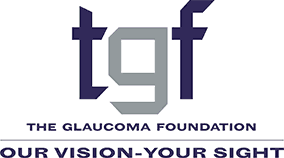~Doctor, I Have a Question. When might optic nerve regeneration and vision restoration be a reality for glaucoma patients?~
Question answered by:

Over the past 10 years, we have been working hard on the long road to find cures for glaucoma patients who have already sustained severe and permanent damage to their optic nerve. Our desire is to go beyond what we can do now – which is to preserve vision and prevent future blindness – and to actually restore vision to people who have already lost it.
Unfortunately, glaucoma is often diagnosed late after vision loss has already begun and, at this time, glaucoma vision loss is irreversible. We can do many things to lower eye pressure and, for most people, this can prevent vision loss from getting worse. Relatively soon, we’ll have neuroprotective therapies that will give us a second method to protect vision but won’t necessarily restore vision.
Vision loss in glaucoma is caused by the death of retinal ganglion cells (RGCs). RGCs are complex types of nerve cells that play a crucial role in vision. RGCs receive and process visual information that begins as light entering the eye and is detected by rods and cones, and then transmit that information to the brain via their axons, which are long fibers that make up the optic nerve.
So, in order to restore vision lost in glaucoma we actually have to replace the retinal ganglion cells throughout the entirety of their visual pathway. That’s an incredibly tall order– the National Eye Institute has designated it as an “audacious goal.”
First, we need to create RGCs from scratch. Recent scientific advances have enabled RGC production from human stem cell sources. But once we have created them in a dish, we have to figure out how to transplant them into the eye in a way that allows them not only to survive, but to migrate into the correct part of the retina where they can receive accurate visual information about the world around us. And then they need to send an axon that goes all the way to the optic nerve head through the optic nerve and then to one of several centers of the brain that are meant to receive visual input. Once there, they have to create synapses so they are able to deliver rapid signals.
Thirty years ago, science would have looked at this list of obstacles and said this is completely impossible, it’s science fiction. But enough work has been done in the past 10 years that this is now scientifically possible.
Regarding the major challenge of axon regeneration, quite a bit of work has actually been done and a number of molecular pathways have been identified that allow surviving RGCs not only to generate RGC axons but to grow axons that in some cases go all the way back to the brain – and actually arrive at structures in the brain that are meant to receive axonal input from RGCs.
But relatively less work has been done on the feasibility of connecting the RGCs to the retina to tell us if that is feasible. We know we can coax them to structurally integrate if we disrupt the internal limiting membrane (ILM) which is a major barrier. But we still have a long way to go – functional integration is something that we are currently assessing. And neuroprotection is going to be really important – the survival rate of RGCs following transplantation needs to be improved.
Knowing that there are a huge number of obstacles that still have to be overcome, we’ve organized a new consortium of more than 200 scientists worldwide to figure out how to actually put all the pieces of the puzzle together.
The goals of the Retinal ganglion cell (RGC) Repopulation, Stem cell Transplantation, and Optic nerve Regeneration (RReSTORe) Consortium are to prioritize the most critical challenges and questions related to RGC regeneration over the next five years, and to brainstorm approaches to meeting these challenges while fostering opportunities for collaborative scientific investigation.
What do I tell my patients today? On the one hand, it is difficult to predict the future of optic nerve regeneration because there are quite a few questions that we don’t even know how to ask yet; we haven’t gotten the experimental systems far enough along to know all of the hurdles that lie ahead.
On the other hand, as a clinician/scientist, it is incredibly meaningful that, especially for my younger patients – children and younger adults – I have something that can bring these patients hope. I confidently think we’ll at least be doing clinical trials in those people’s lifetime. But one has to be realistic. I am not sure it’s likely to happen in less than 6 to 10 years.
Thomas V. Johnson III, MD, PhD, MPH is a Shelley & Allan Holt Rising Professor at the Wilmer Eye Institute, Johns Hopkins Medicine
Dr. Johnson’s answer reflects portions of his talk, Restoring Vision in Glaucoma Patients: Retinal Ganglion Cell Transplantation, delivered at TGF’s October 22 Symposium. His presentation can be viewed in its entirety at the end of the event recording, available on our Events page and by this link to YouTube:
THE FUTURE IS NOW: TRANSLATING NEW INFORMATION INTO CLINICAL PRACTICE – YouTube
